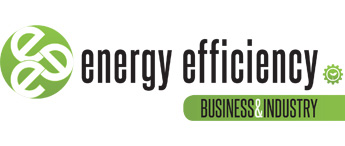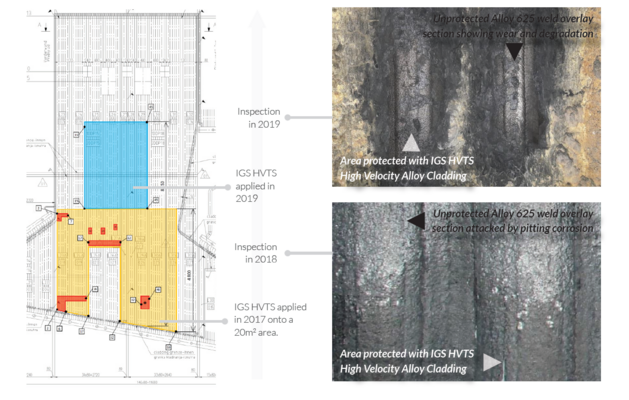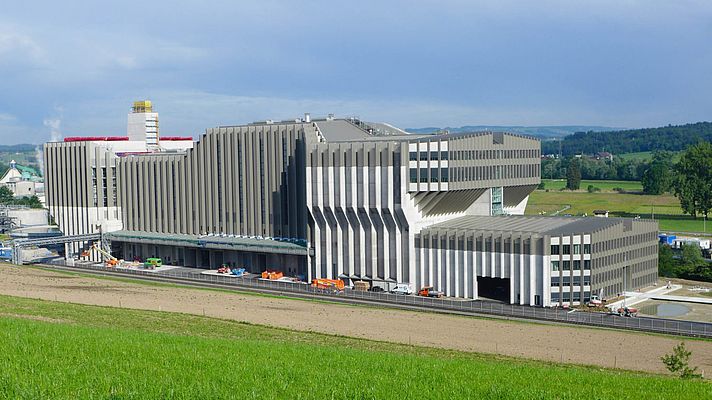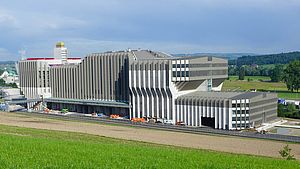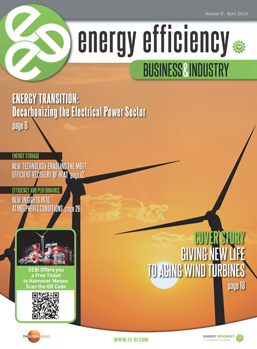The Renergia waste incineration plant is a joint effort of all waste disposal associations from Central Switzerland and Perlen Papier AG. Renergia Zentralschweiz AG is responsible for more than just recycling waste from Central Switzerland. It supplies Perlen Papier AG with process steam, the district heating networks Rontal and Emmen with hot water and provides electricity for approximately 44,000 households. Following two years of construction, the Renergia Waste to Energy plant went into operation in 2015.
WTE Boiler Fireside Corrosion
The Hitachi Zosen Inova (HZI) furnace installed at Renergia is an inclined moving grate four-pass waste to energy boiler with an external economizer. The boiler’s thermal capacity is 47MW with the steam flow of 58 t/h and steam pressure of 41 Bar at 410°C. Alloy 625 weld overlay was shop-applied on the fireside water wall panels to protect the WtE boiler tubes from fireside corrosion. After months of operation, an inspection revealed accelerated degradation of the Alloy 625 just above the grate. Several solutions were considered to manage the boiler tube metal wastage and improve reliability and lifetime of the water walls, including replacement, field applied weld overlay and thermal spray.
Evaluation of Alternatives
The replacement of affected water wall sections with new tubes would have been time consuming and expensive, considering the estimated frequency of replacement of 5 years or less. Like-for-like weld overlay repair is an intensive and time-consuming solution. It requires preliminary grinding of the degraded surface layer prior to the application of new weld overlay. Moreover, both aforementioned solutions wouldn’t exactly solve the problem, as the same corrosive media attacking existing weld overlay would still be present. The third option was thermal spray. “Thermal spray” technology had mixed results in boiler applications and the plant invited 4 thermal spray vendors to perform test applications on different sections within the boiler. Each vendor was given a side wall inside the 2 lines. Out of the 4 claddings applied, only 2 delivered satisfactory results. IGS HVTS solution was found to be the best, both in terms of performance and capacity. Multiple IGS HVTS guns can be operated inside the boiler at the same time with no capacity limitations. Supported by comprehensive laboratory testing and extensive field experience IGS HVTS Alloy Cladding has no issues with permeability or disbondment and can offer lasting protection, where other technologies fall short. The test application results and additional references convinced the head of maintenance to choose IGS HVTS as the solution to their problem.
HVTS Application
IGS HVTS application took place in 2017 on a 20m2 area located on the left membrane wall at the very low furnace of the moving grate WtE boiler above the refractory. The plant also had a thermal spray (TS) coating applied by a different vendor on the right-hand side of the membrane. These areas were then inspected in 2018 to determine whether HVTS and other vendor’s TS were successful at stopping the weld overlay (WMO) degradation. The inspection of the HVTS/WMO interface showed that the area clad with IGS HVTS was no longer affected by corrosion. Unprotected Alloy 625 WMO and other vendor’s TS, on the other hand, both continued to degrade. It was decided to extend the scope and apply HVTS alloy cladding onto an additional ~20m2 area in 2019. Inspection later that year, in August 2019, confirmed the following. The areas protected with high-velocity thermal spray (HVTS) alloy cladding were not exhibiting any pitting corrosion or wastage. Adjacent unprotected Alloy 625 weld overlay sections were showing signs of wear and degradation.
